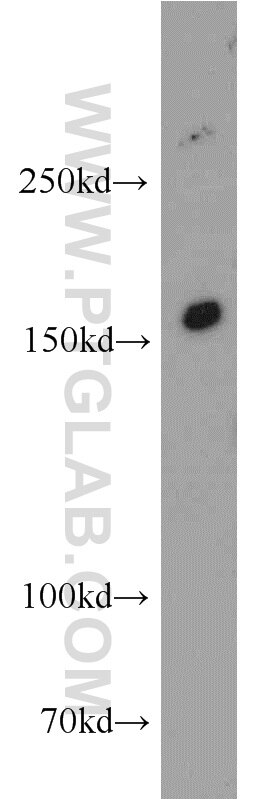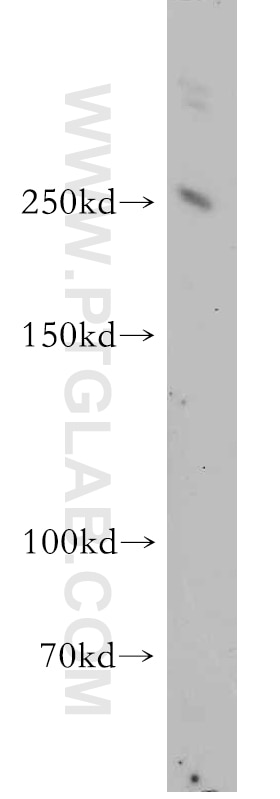Anticorps Polyclonal de lapin anti-INSRR
INSRR Polyclonal Antibody for WB, ELISA
Hôte / Isotype
Lapin / IgG
Réactivité testée
Humain, rat, souris
Applications
WB, ELISA
Conjugaison
Non conjugué
N° de cat : 55112-1-AP
Synonymes
Galerie de données de validation
Applications testées
| Résultats positifs en WB | tissu rénal de souris, tissu cérébral humain |
Dilution recommandée
| Application | Dilution |
|---|---|
| Western Blot (WB) | WB : 1:500-1:2000 |
| It is recommended that this reagent should be titrated in each testing system to obtain optimal results. | |
| Sample-dependent, check data in validation data gallery | |
Informations sur le produit
55112-1-AP cible INSRR dans les applications de WB, ELISA et montre une réactivité avec des échantillons Humain, rat, souris
| Réactivité | Humain, rat, souris |
| Hôte / Isotype | Lapin / IgG |
| Clonalité | Polyclonal |
| Type | Anticorps |
| Immunogène | Peptide |
| Nom complet | IR related receptor |
| Masse moléculaire calculée | 144 kDa |
| Poids moléculaire observé | 150-155 kDa |
| Numéro d’acquisition GenBank | NM_014215 |
| Symbole du gène | INSRR |
| Identification du gène (NCBI) | 3645 |
| Conjugaison | Non conjugué |
| Forme | Liquide |
| Méthode de purification | Purification par affinité contre l'antigène |
| Tampon de stockage | PBS with 0.02% sodium azide and 50% glycerol |
| Conditions de stockage | Stocker à -20 ℃. L'aliquotage n'est pas nécessaire pour le stockage à -20oC Les 20ul contiennent 0,1% de BSA. |
Informations générales
INSRR, also named as IRR, belongs to the protein kinase superfamily, Tyr protein kinase family and INS receptor subfamily. It probably binds an INS related protein and has a tyrosine-protein kinase activity. It phosphorylates the INS receptor substrates IRS-1 and IRS-2. INSRR is a heterotetrameric transmembrane receptor composed of two alpha and two beta chains linked by disulfide bonds. INSRR shares high homology with the INS (IR) and the IGF-1R, but doesn't bind any of IR and IGF-1R known ligands. The antibody is specific to INSRR.
Protocole
| Product Specific Protocols | |
|---|---|
| WB protocol for INSRR antibody 55112-1-AP | Download protocol |
| Standard Protocols | |
|---|---|
| Click here to view our Standard Protocols |



